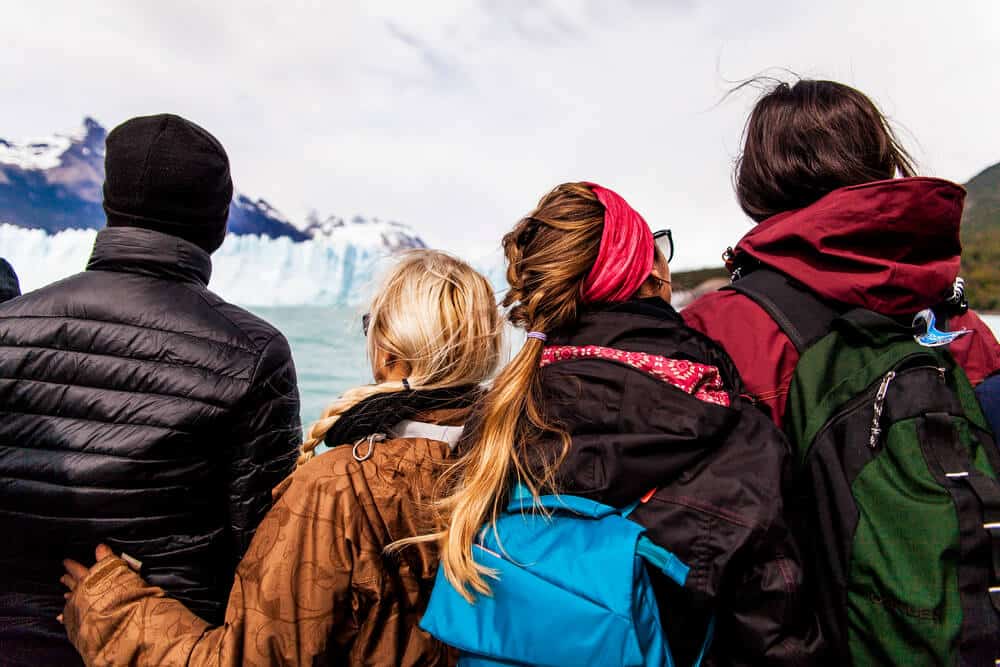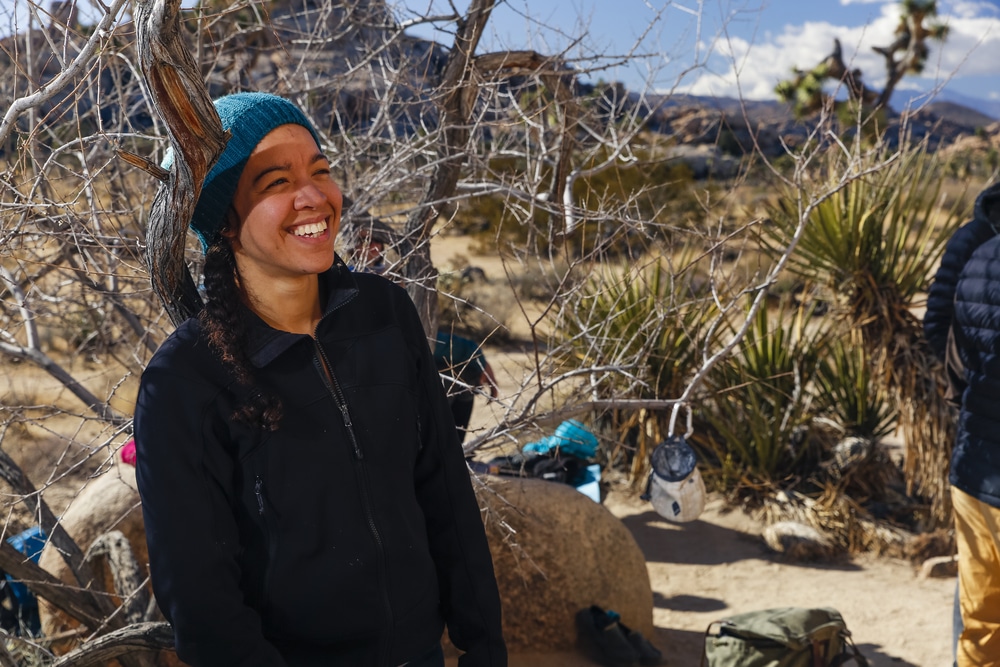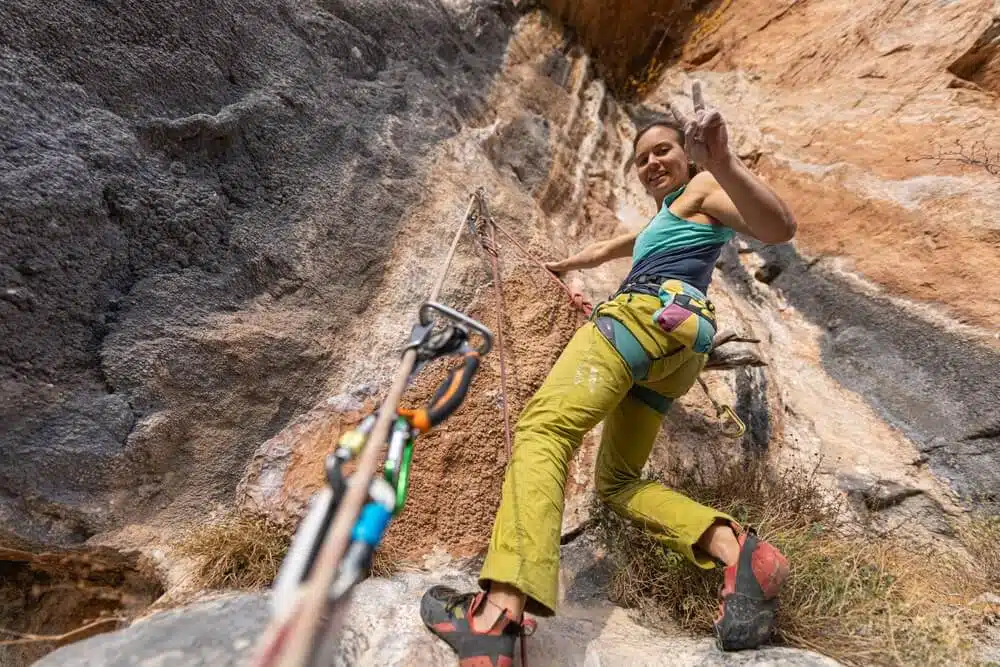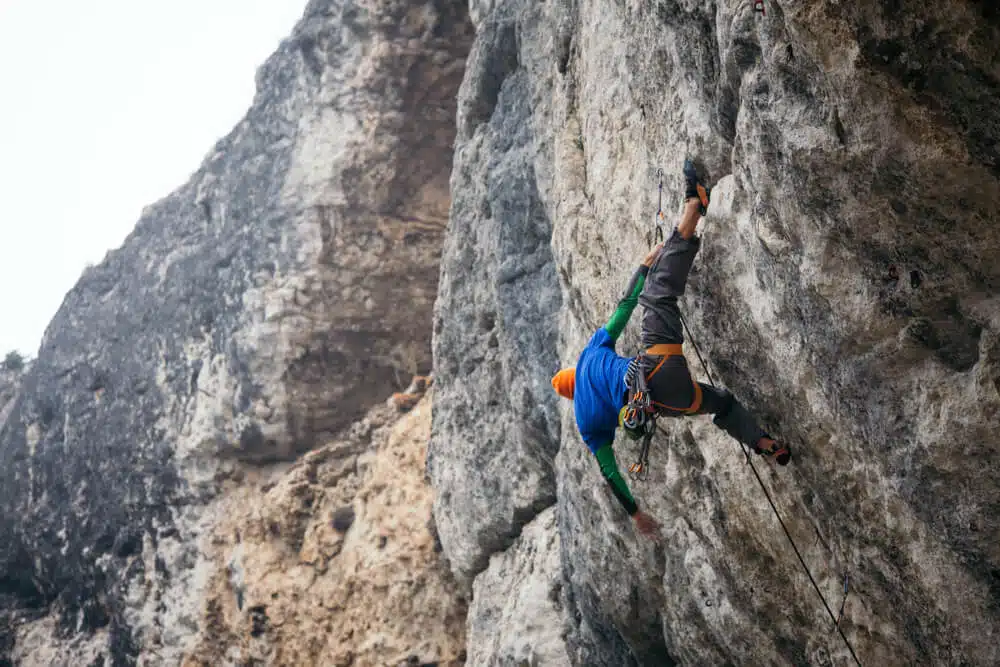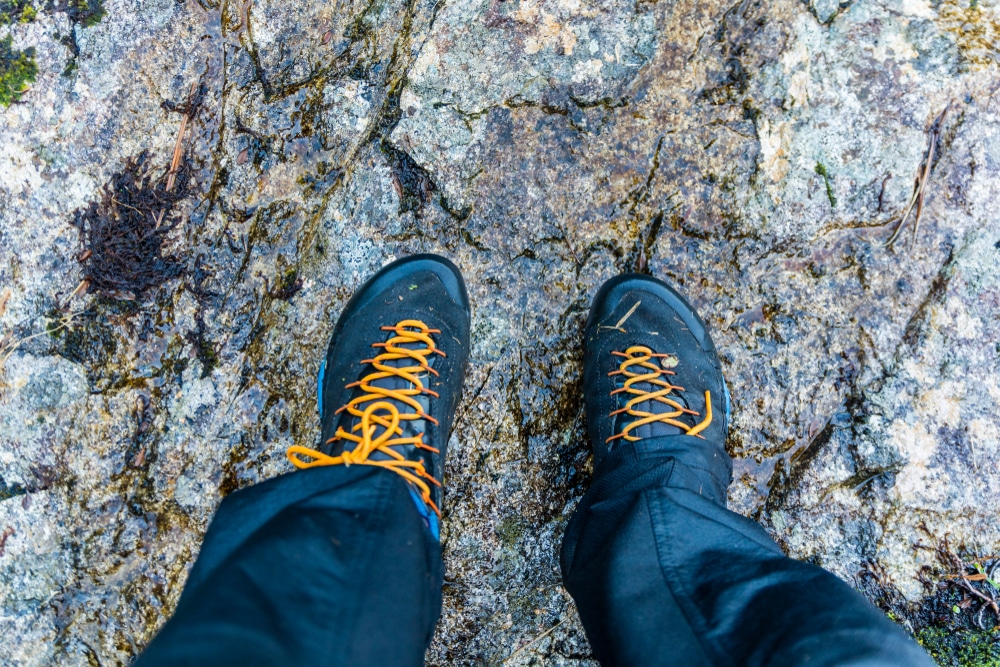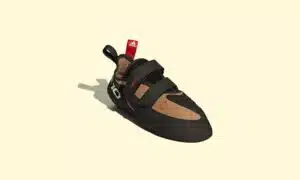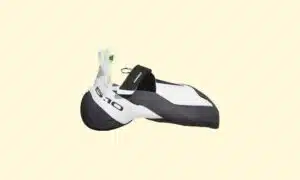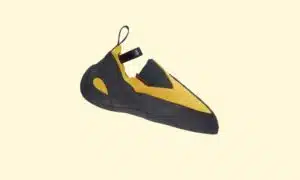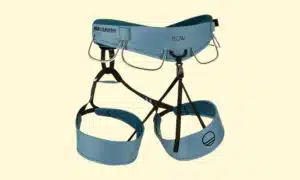In 2024 the fashion world is definitely coming around to styles and trends set by climbers. It’s not uncommon to see people posing on instagram in expensive shell jackets with ultralight backpacks in tow.
You couldn’t be blamed for thinking that these are necessary items, and rock climbing needs to be performed only using technical apparel. The reality is that you don’t need to dress in only specialized climbing clothes, and unless you’re engaging in high altitude mountaineering you don’t need to go out and spend hundreds on an outfit to go climbing.
Still, some choices are better than others when it comes to rock climbing. In this post we’ll take you through all of our recommendations for suitable climbing clothes from head to toe.
“Technical” Apparel VS Regular Clothes
A quick note on branded clothing…
Companies spend plenty of money on marketing to make you believe that you need a 200 dollar pair of pants to go climbing indoors, when in reality any pair of stretchy jeans, loose pants or shorts will do.
Seasoned climbers often don’t wear clothes that are “designed” for climbing on every outing.
Branded climbing clothes are generally more expensive, additionally they don’t always look very stylish so they aren’t great for gym sessions that will be followed up with a trip to the pub. However, there are some best practices that will help you make sure you stay comfortable the whole time climbing while still looking good.
Headwear
There are plenty of options for headwear while climbing. Depending on the weather, they can either keep you warm or cool you off. If you are climbing during the colder months, a beanie is an excellent choice. They can help you stay warm where it counts and won’t cause you to overheat easily. In contrast, if you are climbing outdoors on a sunny day, a baseball cap is a great addition to keep the sun out of your eyes. A lightweight cap with venting and a soft brim is preferable, as it will breathe well and fits under a helmet well.
This brings us to helmets.
Despite what the shirtless guy on the route next to you may say, helmets are an important safety accessory for all types of outdoor roped climbing.
It only takes one falling rock to change your (or your family’s) life forever. Aside from aerial projectiles, helmets also protect your fragile skull in the event that you should fall upside down and smack your head on the wall. The more time you spend rock climbing, the more you will see that this is invaluable advice. Seriously, wear a helmet. You will thank us later, also we think you look very cool and cute in it.
Upper Body
The choice of what to wear on your torso is probably the most significant for temperature and moisture management. Generally speaking you will be climbing in either:
- An indoor climbing gym
- The outdoors
If you are going to a rock climbing gym, then the chances are you won’t need to worry too much about temperature variation. If it is hot, short sleeved shirts, tank tops, and sports bras all make good options to keep you going with enough ventilation. On colder days in the gym, a simple long sleeved shirt will do. Try to pick sweat wicking fabrics on cold days when perspiration can build up during activity and will leave you feeling chilly during your breaks. In general you have a lot more flexibility with your gym clothes than you do when rock climbing outdoors.
If you are climbing outdoors, the chance that you will encounter cold temperatures goes up exponentially. Wearing layers on your torso is often necessary to stay warm. With a good layering system, you can also remove clothing as necessary to keep from overheating when you’re working hard.
Layering
Generally layers fall into one of three main categories; baselayers, insulation, and shells.
Baselayer
A good baselayer is the foundation of a warm and comfortable outfit for climbing in. It’s okay to wear a cotton t-shirt if you are climbing in warm weather, but it should generally be avoided on colder days. Instead, pick a fabric that stays warm while wet like synthetic or merino wool.
Baselayers help wick the sweat off and regulate your temperature. Short sleeved shirts, sports bras, crop tops and long sleeve shirts all work well as baselayers. Some people like to wear tight fitting baselayers while others prefer baggy clothes, it really comes down to personal preference.
Insulation
Insulation is any layer that will actively keep you warm. It comes in various weights and forms, suitable for different conditions. Fleeces, and puffy jackets are the most common forms of insulation. It’s a great idea to carry one of each of these if you plan on getting into outdoor climbing, as it will make you much more comfortable in the cold.
Shells
When it starts to get really windy or rain begins to fall, it’s time to put on a shell. Shells are outer layers that shield from the elements, hence their name.
There are three main kinds of shells:
- Hard shells
- Soft shells
- Wind shells.
Hard shells are more waterproof, heavier, and usually don’t breathe very well. They are great in rain and snow, but will feel quite hot if you use them while climbing in more temperate conditions.
Soft shells are not as waterproof, but they have some stretch and will feel less clammy. Soft shells are great for climbing in, since the stretch usually makes them much more comfortable and durable, and their water resistance is enough for light rain.
Finally, wind shells are a super lightweight type of shell that offers minimal to no rain resistance, but packs down very small and keeps out cold gusts. Wind shells are not optimal for using while rock climbing since the fabric is so thin and can easily tear, but it makes a great protective layer while belaying. Pick a shell that will suit the environment you want to climb in.
Most people who have been climbing a long time own one of each kind of shell. A soft shell is a great first choice as it is flexible and durable. If you are worried that they aren’t 100% waterproof, ask yourself if you want to be rock climbing in the rain, or if you would probably try to go inside. If you prefer the latter, a soft shell is enough for you.
Lower Body
Pants
It’s easier to plan what you will wear on your legs while rock climbing than what you will wear on your torso. Generally you just need to bring one pair of climbing pants.
A few key points:
- Our legs don’t feel cold as easily, so we don’t need to worry about layering our pants unless the temperatures fall below freezing.
- In the summer it can be nice to wear shorts. A great choice is shorts that come down just below your knees so you get some protection from cuts and abrasion when camming your legs into cracks and features. If you do want a bit more protection, lightweight hiking pants are a good choice.
For a more feminine look in hot weather, yoga pants work quite well. When it gets a bit colder, look for long pants which have a bit of stretch in them so you don’t feel restricted while climbing.
What About Cold Weather?
The gold standard for cold weather climbing pants is a good soft shell.
These will be stretchy, durable, and keep cold wind at bay. Models that have zippered pockets are great, since regular pockets get obstructed by the leg loops of a harness. For indoor rock climbing, a pair of climbing jeans with a bit of spandex blended in is a stylish and fun alternative.
Footwear
Climbing Shoes
In the early days, there were only a few models of rock climbing shoes to choose from. Now, there are hundreds of models with different features, specialized for bouldering, indoor climbing, and trad and alpine.
Most gyms offer shoe rentals, this is a good place to start if you are new to climbing. Once you have an idea of the size and style you prefer, it’s nice to get your own pair of climbing shoes. While many climbers use aggressive, downturned shoes, a good first pair of shoes for a new climber should be something that is comfortable to wear for a few hours at a time.
Other Shoes
When you’re not wearing your rock shoes, you’ll need another pair of shoes to wear while getting to the crag. If it isn’t a long walk then it isn’t necessary to get anything specialized.
However, if you need to walk up a steep or long trail it might help to consider getting the following:
- Trail runners
- Approach shoes
- Hiking boots.
If you are bouldering or sport climbing, you will probably be putting your shoes on and taking them off a lot. Sandals are good “intermittent” shoes that you can wear easily while waiting to climb. I’m a big fan of crocs, as it’s just so easy to wear them without any fuss.
Socks
A good pair of merino wool socks makes a world of difference when rock climbing. Some people like to wear socks underneath their climbing shoes, while others go barefoot. Thin, athletic ankle socks help protect against abrasion from the cuff of climbing shoes and also keep them for stinking too much.
Anything Else?
Remember that climbing is supposed to be fun. Suitable clothes might be a down jacket one day, and a neon pink pair of spandex tights the next. It’s important to have all the essentials to keep warm, but there is no reason you can’t express your own personal style as well. Wear what makes you happy!


